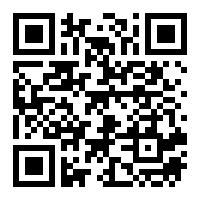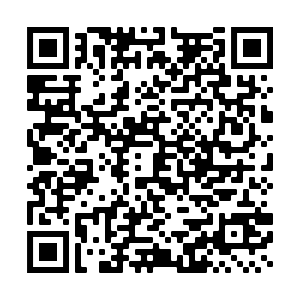Centro de Recursos para el Aprendizaje Remoto
El CRAR tendrá a su vez, computadoras con programas especializados para el análisis de datos de los diferentes equipos, como programados para dibujar estructuras, entre otros. Además se tendrán computadoras portátiles disponibles para que los estudiantes que así lo necesiten pueden utilizarlas. El CRAR también contará con tutores para ayudar a los estudiantes de diferentes cursos de Química como Química General, Química Analítica y Química Física.
Entre los programas que contará el CRAR son:
- ChemDraw Prime
- Graphpad
- ACD Labs
- SPARTAN
Recursos en línea
Este es un módulo para aprender o repasar como se escriben fórmulas químicas de compuestos iónicos. Estará utilizando bloques para representar a los iones para entender de una forma divertida y visual, porqué surgen los números en las fórmulas de compuestos iónicos. Podrá practicar con diferentes iones y combinaciones de diferentes cationes y aniones. Puede ser accedido por cualquier dispositivo electrónico pero se recomienda una computadora o tablet. También encontrará un documento de trabajo donde podrá ir anotando la información que vaya trabajando con el tablero. Este módulo fue diseñado por la Dra. Kariluz Dávila
Este repaso de matemática lo que pretende es servir de repaso para la matemática que se utiliza en Química General.
Temas que se ven en este repaso son:
- Operaciones matemáticas comunes en química general
- Notación científica
- Ecuaciones
Ecuaciones lineales
Ecuaciones simultáneas
- Razones, proporciones y porcentajes
- Propiedades de exponentes
- Propiedades de logaritmos
Además se darán ejercicios de práctica.
Este módulo fue diseñado por la Dra. Kariluz Dávila
MolView is an intuitive, Open-Source web-application to make science and education more awesome! MolView is mainly intended as web-based data visualization platform. You can use MolView to search through different scientific databases including compound databases, protein databases and spectral databases, and view records from these databases as interactive visualizations using WebGL and HTML5 technologies. This web application is built on top of the JavaScript libraries and online services listed below. It is completely free.
pH app is a simulator for pH of mixtures or titration curves. This web-application is completely free.
Chemix is an educational app that lets you easily draw lab diagram setups and explain your experiments. It has a large library of highly customisable apparatus and various features to help you draw diagrams with ease. The Free tier lets you use most of the app for free and images you create with Chemix belong to you: You can include them in instructions, teaching material, presentations, YouTube videos etc. To unlock all features and items you need to pay.
ACD/Labs provides the following chemistry software free for personal, home, and educational use.
This central Bookshelves area in this LibreTexts Library holds texts that are curated by the LibreTexts Development team and can be used either directly or as content for building customized remixes (i.e., texts that are generated from existing content often with customized editing and/or content interspersed) for use in Course Shells housed in Campus Bookshelves. There are two classes of texts found in the Bookshelves: “Textbooks” and “Textmaps”. Textbooks are the central spot for integrated content into our library and are identified by “Book:” in their titles. Textmaps are specialized remixes that are constructed to follow the organization of existing commercial textbooks.
Ptable is the world’s most popular periodic table, available in 50 languages around the world. You can use in different modes to see different information, for example: properties, isotopes, electros, and compounds.
Mass Spectrometry Educational Resource
ChemSpider is a free chemical structure database providing fast text and structure search access to over 100 million structures from hundreds of data sources.
R&D Chemicals is a common and freely accessible chemicals catalog and directory of suppliers of products and services for research and development over the internet.
These guides have been developed from existing good practice guides produced by the Royal Society of Chemistry and material kindly supplied by UK university chemistry departments. They are aimed primarily at providing postgraduate students and university researchers with the essential basic knowledge needed to work safely in a chemical laboratory.
Eric Weisstein’s World of Science contains budding encyclopedias of astronomy, scientific biography, chemistry, and physics. This resource has been assembled over more than a decade by internet encyclopedist Eric W. Weisstein with assistance from the internet community.
This online version of the IUPAC Compendium of Chemical Terminology mostly corresponds to the second edition (1997), compiled by Alan D. McNaught and Andrew Wilkinson (Royal Society of Chemistry, Cambridge, UK). Towards the end of 2003, work began on the addition of terms from more recent IUPAC recommendations, with the intention of eventually bringing the website into a condition in which it can be maintained up-to-date.
The IUPAC Color Books are the world’s authoritative resource for chemical nomenclature, terminology, and symbols. Terminology definitions published by IUPAC are drafted by international committees of experts in the appropriate chemistry sub-disciplines, and ratified by IUPAC’s Interdivisional Committee on Terminology, Nomenclature and Symbols (ICTNS). The books in this series are as follows:
Green Book: Quantities, Units and Symbols in Physical Chemistry
Red Book: Nomenclature of Inorganic Chemistry
Blue Book: Nomenclature of Organic Chemistry
Purple Book: Compendium of Polymer Terminology and Nomenclature
Orange Book: Analytical Nomenclature
Silver Book: Compendium of Terminology and Nomenclature of Properties Clinical Laboratory Sciences
White Book: Biochemical Nomenclature
Gold Book: Chemical Terminology
The latest release of the Periodic Table (dated 1 Dec 2018).
PubChem is the world’s largest collection of freely accessible chemical information. Search chemicals by name, molecular formula, structure, and other identifiers. Find chemical and physical properties, biological activities, safety and toxicity information, patents, literature citations and more.
Información para contactar el CRAR:
Teléfono: 787-764-0000 Ext. 88547
Correo electrónico: cahreus.rp@upr.edu
Lugar: CN-249


